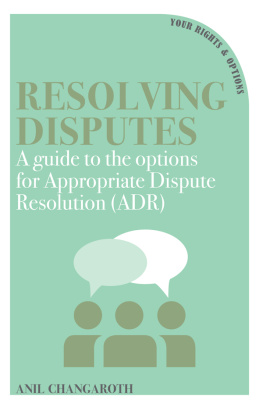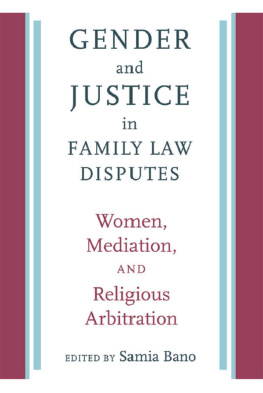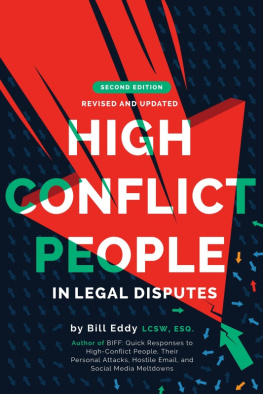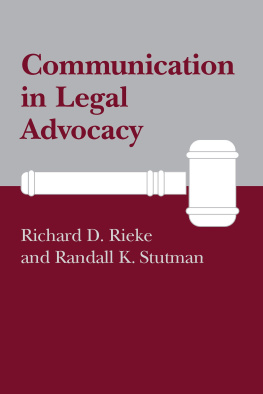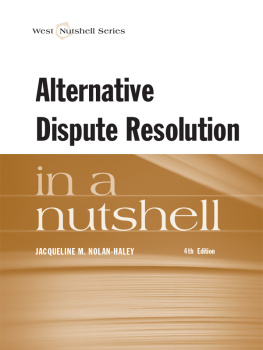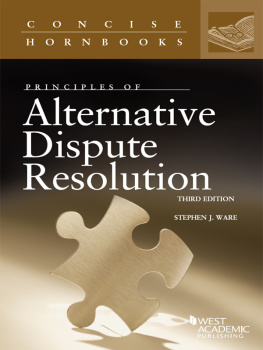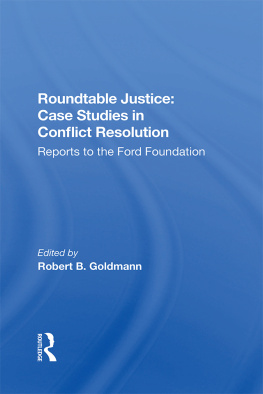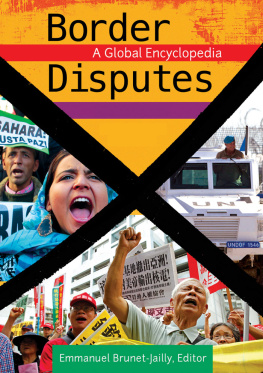Contents
Guide
RESOLVING DISPUTES

2019 Marshall Cavendish International (Asia) Pte Ltd
Text Anil Changaroth
Published by Marshall Cavendish Editions
An imprint of Marshall Cavendish International

All rights reserved
No part of this publication may be reproduced, stored in a retrieval system or transmitted, in any form or by any means, electronic, mechanical, photocopying, recording or otherwise, without the prior permission of the copyright owner. Requests for permission should be addressed to the Publisher, Marshall Cavendish International (Asia) Private Limited, 1 New Industrial Road, Singapore 536196. Tel: (65) 6213 9300 E-mail:
Website: www.marshallcavendish.com/genref
The publisher makes no representation or warranties with respect to the contents of this book, and specifically disclaims any implied warranties or merchantability or fitness for any particular purpose, and shall in no event be liable for any loss of profit or any other commercial damage, including but not limited to special, incidental, consequential, or other damages.
Other Marshall Cavendish Offices: Marshall Cavendish Corporation. 99 White Plains Road, Tarrytown NY 10591-9001, USA Marshall Cavendish International (Thailand) Co Ltd. 253 Asoke, 12th Flr, Sukhumvit 21 Road, Klongtoey Nua, Wattana, Bangkok 10110, Thailand Marshall Cavendish (Malaysia) Sdn Bhd, Times Subang, Lot 46, Subang Hi-Tech Industrial Park, Batu Tiga, 40000 Shah Alam, Selangor Darul Ehsan, Malaysia
Marshall Cavendish is a registered trademark of Times Publishing Limited
National Library Board, Singapore Cataloguing-in-Publication Data
Names: Changaroth, Anil.
Title: Resolving disputes : a guide to the options for appropriate dispute resolution (ADR) / Anil Changaroth.
Description: Singapore : Marshall Cavendish Editions, [2019]
Identifiers: OCN 1086160956 | ISBN 978-981-48-4171-9 (paperback)
Subjects: LCSH: Dispute resolution (Law)--Singapore.
Classification: DDC 347.595709--dc23
Printed in Singapore
CONTENTS
ACKNOWLEDGEMENTS
To my community in the Taman Jurong constituency (including members of Tasek Jurong) under the Honourable Deputy Prime Minister Tharman Shanmugaratnam. While I lived in Jurong Town for the first 33 years of my life until 1998, it was the last 23 years (after coming into legal practice) serving the community with pro bono legal services (with conversational Mandarin, Malay, Tamil, my mother tongue Malayalam, and smatterings of Hokkien) that truly humbled me into appreciating the extent of basic needs, concerns and issues (at times legal) that many in the community face in their daily lives. While these may seem insignificant to some, they are to many of them serious issues. To them, this guidebook will, I hope, take away the fear of facing legal issues, knowing full well that when disputes arise, it is not a case of having no control over the rigours of litigation, instead, they can each be totally in control and in charge of how they would like to resolve such matters.
To my family, my best half Shyamala (with her literary approach to life) and sons Keshav (having also interned at my chambers and always has a somewhat simpler take on all things important), Akshay (a seasoned debater, who often considers matters from differing view points) and Tejas (the familys happy pill, with his incredibly positive attitude to life). All four of them are avid readers, who are constantly amused at how I am not able to read as prolifically as they do and my dreadful attention span (except when it comes to watching television). It was their individual passion for sharing from their reading that provided the greatest impetus for me to embark on bringing this book to life. And most importantly, my late father, Padmanabhan (Papan) Kottayi Changaroth, who in the 1980s was so instrumental in guiding me down this path to this noble profession. His own father was, in the early 20th century, facilitating negotiations and mediating disputes as a Panchayath village council head in Kuthuparamba, Kottayampoyil in Kannur district, Kerala, India.
And to my team at ChangAroth Chambers LLC my associate Syafiq Muhammad Lim, LLB (Hons), National University of Singapore, who provided his polished, calm and meticulous detailing of several aspects of this book; practice trainee Mikhail Rashid Wee, LLB (Hons), Singapore Management University, who provided the fresh graduates clarity and accuracy on the legalities; intern undergraduate Serena Mei Shien Russell, BSc in Management, University of Warwick Business School, who provided insightful perspective from a common persons understanding and views on dispute resolution; intern A level Affiqah Juffri Syuriah, Pioneer Junior College, Singapore, who shared her knowledge on mediation and online dispute resolution from her final-year project on community mediation; and ChangAroth Chambers and ChangAroth InterNational Consultancys alliance partner Resolve Disputes Online trailblazing the Online Dispute Resolution arena and collaborating with my chambers and consultancys development of community mediation, adjudication and dispute board ODR platforms.
Jai Shree Hanuman
INTRODUCTION
Our everyday interactions with a whole host of people often lead to disagreements, usually arising from the background of contractual agreements or understandings. These could well lead parties to engage lawyers and ultimately turning to the courts for resolution.
The Abraham Lincoln (16th President of the United States) quote Discourage litigation. Persuade your neighbours to compromise whenever you can. As a peacemaker the lawyer has superior opportunity of being a good man. There will still be business enough. forms the foundation of this guidebook aimed at providing an overview and assisting parties in understanding the diversity of options available for less acrimonious dispute resolution.
The nature of the dispute and how the parties wish to take the dispute forward would possibly determine the best and most suitable method to be adopted when the need so arises for a dispute settlement.
With a clearer understanding of the basic dispute resolution mechanisms available and how these work, many disputes are likely to be resolved in the most appropriate manner, in the fastest time and at the most efficient cost.
The author, in this guidebook, refers to these mechanisms as Appropriate Dispute Resolution (ADR) as opposed to what is commonly known as Alternative Dispute Resolution, as these are no longer simply alternatives to the conventional dispute resolution mechanism of litigation or arbitration.
The speed, efficiency, and binding nature (often so agreed upon) of these mechanisms are aimed at achieving resolution for the parties, and have resulted in considerably less ill-will being generated between disputing parties. To that end, ADR has a key advantage in situations where parties have to continue interacting even after settlement is reached and hence, for several years now, these more appropriate options have increasingly been chosen. Well-run processes and conclusions can often even improve parties relationships.

